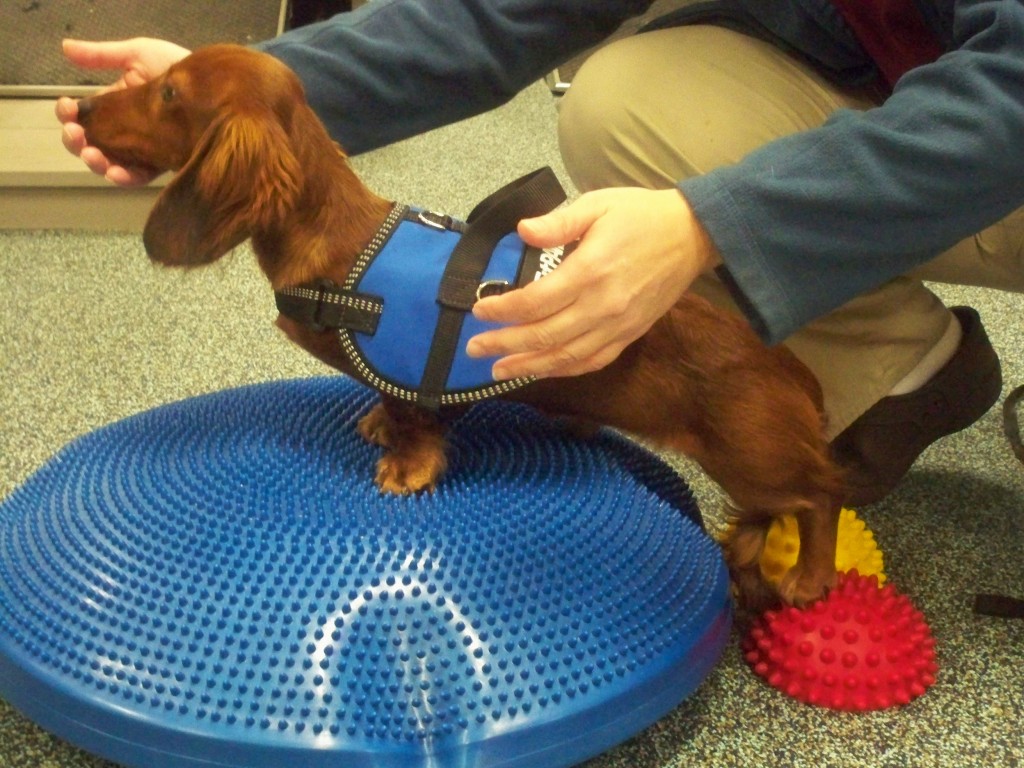 Don’t forget the emotional needs of your pet. Don’t forget the emotional needs of your pet.
When most people think of canine rehabilitation therapy, they focus on the exercises and physical aspects of this field. We picture specific equipment such as a pool or underwater treadmill to build muscle, laser therapy or a TENS unit to manage pain, and massage to work out tight muscles. In truth, rehabilitation for most pets involves as much abstract emotional type support as physical conditioning. When chronic pain or a sudden injury changes how a pet moves or is able to interact with their family, they can battle frustration and withdrawal just like we do. To be truly successful in rehabilitation, the emotional state of the patient needs to be included in any protocol planning and goal setting.
So what’s your goal and how do you get there?
Quality of life and a pet’s happiness should be at center of our goals, but how to get there in each case is a little different. For the animal dealing with chronic pain from arthritic joints or soft tissue injury, perhaps aggressive pain control through oral medication, laser therapy, and some pain free exercise in the pool. Maybe your dog has mobility issues due to neurological changes or unstable joints. Support wraps or the use of carts can open doors to periods of independence and joyful play. Don’t think of a cart as giving up, but rather as an opportunity for your furry loved one to feel a little freedom once again.
Changes at home can make a big difference.
With these goals in mind, changes in the home environment are also important to maintaining a positive outlook for both a pet and their family. Some adaptations include: the use of ramps in and out of the house, steps to the bed for animals unable to jump up on their own any longer, strategically placed runners on slippery hardwood floors, booties to protect the foot that gets sores from dragging. The list of possibilities goes on and is limited only by your imagination and creativity. Being able to move around comfortably and with out assistance can lead to exploration and a return to activities that had previously been too painful or difficult.
From a rehabilitation therapist’s perspective.
I have seen time and again situations where rehab intervention will make moderate progress in the physical realm but leaps and bounds in a patient’s attitude and interaction with their people. By removing the barriers of pain and immobility, many pets are happy and confident enough to get off their bed and go for those short walks or spend quality time as part of the family. A great attitude and strong spirit of both pets and their owners can be the key to a successful rehabilitation of both body and mind.
|